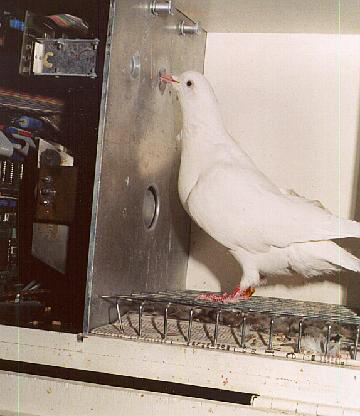The (Pigeon) Key to Behavior: Measurement Counts!
In a recent piece, I introduced readers to the pigeon as the subject extraordinaire for laboratory research on basic learning processes. Pigeons are used because of their long lives and their adaptability to changing environmental conditions (after all, by many they are considered urban nuisances, in a class with rats and raccoons). To understand the behavior of any living creature, including a human, we have to be able to measure the behavior of interest. Without measurement there is no way to assess whether what we are doing to effect change is really resulting in any change. Thus, measurement is the key to any behavior change program.
And keys are the key to this piece. It turns out it is very easy to teach a pigeon to peck with its beak. Once the peck response is learned, the number of pecks and the distribution of those pecks in time can be changed simply by changing the conditions of reinforcement, that is, reward. Pigeons can be taught to peck fast or to peck slowly, to peck at an evenly spaced tempo or vary the tempo over time, to respond quickly to a stimulus or to wait for some time after a stimulus is presented to make a response. In a nutshell, the pecking of the pigeon can be controlled by how the consequences of its pecking (i.e., the food earned by pecking) are arranged.
The four devices shown in the photograph are called pigeon keys. I don’t why they are called “keys” because they don’t look like keys and the only thing they unlock is the pecking behavior of the pigeon. B. F. Skinner used the first pigeon keys in the 1940s, when he began a series of experiments to test the feasibility of using pigeons to guide bombs to selected targets (Click here to see Skinner's original article on this topic). Each key is basically an electric switch. Pecking the round lighter colored circle causes the switch to close and thereby record a single peck. The key usually is mounted horizontally on a piece of aluminum called a “work panel” such that the pigeon sees just a round circle. The circle can be illuminated from behind by different colors or by projecting different images (e.g. shapes or even photographs of common everyday objects) onto the key. The responses measured as electrical impulses are transmitted to a computer that keeps track of the responses and arranges for some of them to be reinforced by presenting food for the pigeon to eat. An example of a mounted key being pecked by a pigeon is shown in the photograph below:

The response key allows very precise measurement of the response, far more precise than could be obtained by merely watching the pigeon and counting its pecks. This precision allows in turn very precise control over the response. In many ways, the key pecking measure in the laboratory is the ideal – it shows behavioral scientists what can be achieved when the environment can be specified with precision. This kind of precision of measurement often is neither possible, nor even needed, when behavior analysis is applied to human behavior.
The key message of the pigeon key is that to change behavior, the behavior to be changed has to be specified precisely. The pigeon key nicely sets the limits on defining the response –only those responses that operate the key’s switch count as responses. Those on the floor or on the key’s edge that don’t activate the switch don’t count. Pecks on the key that are not hard enough to activate the switch don’t count. There is never a question of how many responses have occurred, when they have occurred, because these are measured electronically by the computer monitoring the key.
In some contemporary research, touch screens have replaced the response-activated switch, but the principles of recording are identical: define the response and figure out a way to record/measure it.
In measuring human behavior, by analogy, we also have to decide on the limits of an acceptable response. If the child is supposed to make the letter “A,” for example, will an inverted V with half a cross bar count as an “A” or not? The way that we define the behavior is very important in determining what we ultimately get as a response. Unlike the pigeon key, with humans the response often is counted by another human, rather than a computer. Both the response definition and the response count, because they rely on human observers and not computers counting switch closures, require special techniques to assure the same type of objectivity and reliability that the humble pigeon ensures.



